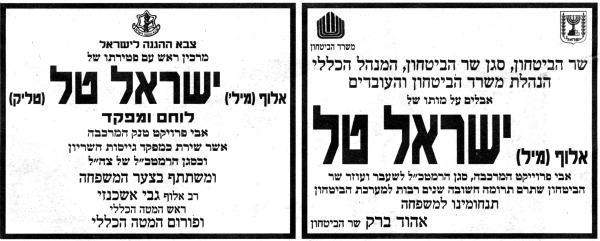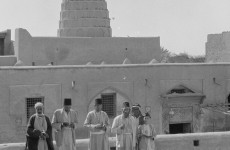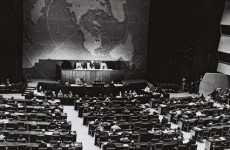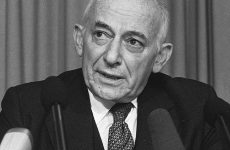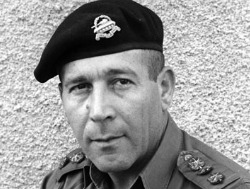
Israel Tal (September 13, 1924 – September 8, 2010), also known as Talik, was an Israel Defense Forces (IDF) general known for his knowledge of tank warfare and for leading the development of Israel’s Merkava tank.
Tal began his military service with the British Army’s Jewish Brigade, serving in Italy during the Second World War. He later served as a junior officer during the Israeli War of Independence, was a brigade commander during the 1956 Sinai War, an armored-division commander in Sinai Peninsula during the Six-Day War, and commander of the southern front during the final stages of the Yom Kippur War. Israel Tal died in Rehovot on September 8, 2010.
In 1970, Israel decided it needed an independent tank-building capability due to uncertainty of overseas sales for political reasons. Israel Tal led a development team which took into consideration Israel’s battlefield characteristics and lessons learned from previous wars, and began the development and building of Israel’s Merkava tank. After the official end of the Yom Kippur War, Tal, serving as commander of the southern front, received an order from Chief of Staff General David Elazar and Defense Minster Moshe Dayan to attack Egyptian forces. Tal refused to follow the order, insisting that it was an unethical order and requesting authorization for the requested attack from the prime minister and the supreme court. Such authorization never came. Tal won the argument, but his refusal to follow the illegal order as a practical matter eliminated the chances of his being nominated for the position of Chief of Staff to succeed General Elazar.
Tal was the creator of the Israeli armour doctrine which led to the Israeli successes in the Sinai in the Six Day War. Well after the Suez Crisis, Tal organized the armour into the leading element of the Israeli Defense Forces, characterized by high mobility and relentless assault. Starting in 1964, General Tal took over the Israeli armor corps and re-trained all Israeli gunners to hit targets beyond 1.5km. In open terrain, such long distance gunnery proved vital to survival of Israeli armor corps for subsequent wars. Its mobility is considered comparable to the German Blitzkrieg and many hold it to be an evolution of that tactic. Tal’s transformation and success in 1967 led the IDF to expand the role of armour. This resulted however, in reduced attention to other less glamorous, but essential aspects of the army, such as the Infantry. Following the 1973 surprise attack, this excessive focus on fast striking offensive armour left the IDF temporarily without adequate defensive capability. Only in latter stages of the war did the armour break out and show its potential; General Avraham Adan’s armour penetrated the Egyptian lines, crossed the Suez Canal and, despite a cease-fire being agreed, Israel enveloped the Egyptian 3rd Army near Suez. While the IDF has become a more balanced force since 1973, Tal’s development of armour doctrine has been very important to the IDF and has influenced armoured doctrines in other parts of the world. Tal and his Egyptian counter-part sat in the sand to negotiate the terms of the cease fire on the Sinai.
Israel Tal was awarded the Eliyahu Golomb Israel Security Award in 1961 and in 1973. In 1997, Tal was awarded the Israel Prize for his special contribution to the society and State of Israel. In 1991, he received a honorary doctorate at Ben-Gurion University of the Negev. In 2002, he was chosen “Knight of Quality Government” by the Movement for Quality Government in Israel in the “Military and security” category. Israel Tal’s picture appears in the Patton Museum of Cavalry and Armor’s “Wall of Greatest Armor Commanders” along with compatriot Moshe Peled, Americans George S. Patton and Creighton Abrams and German field-marshal Erwin Rommel.
